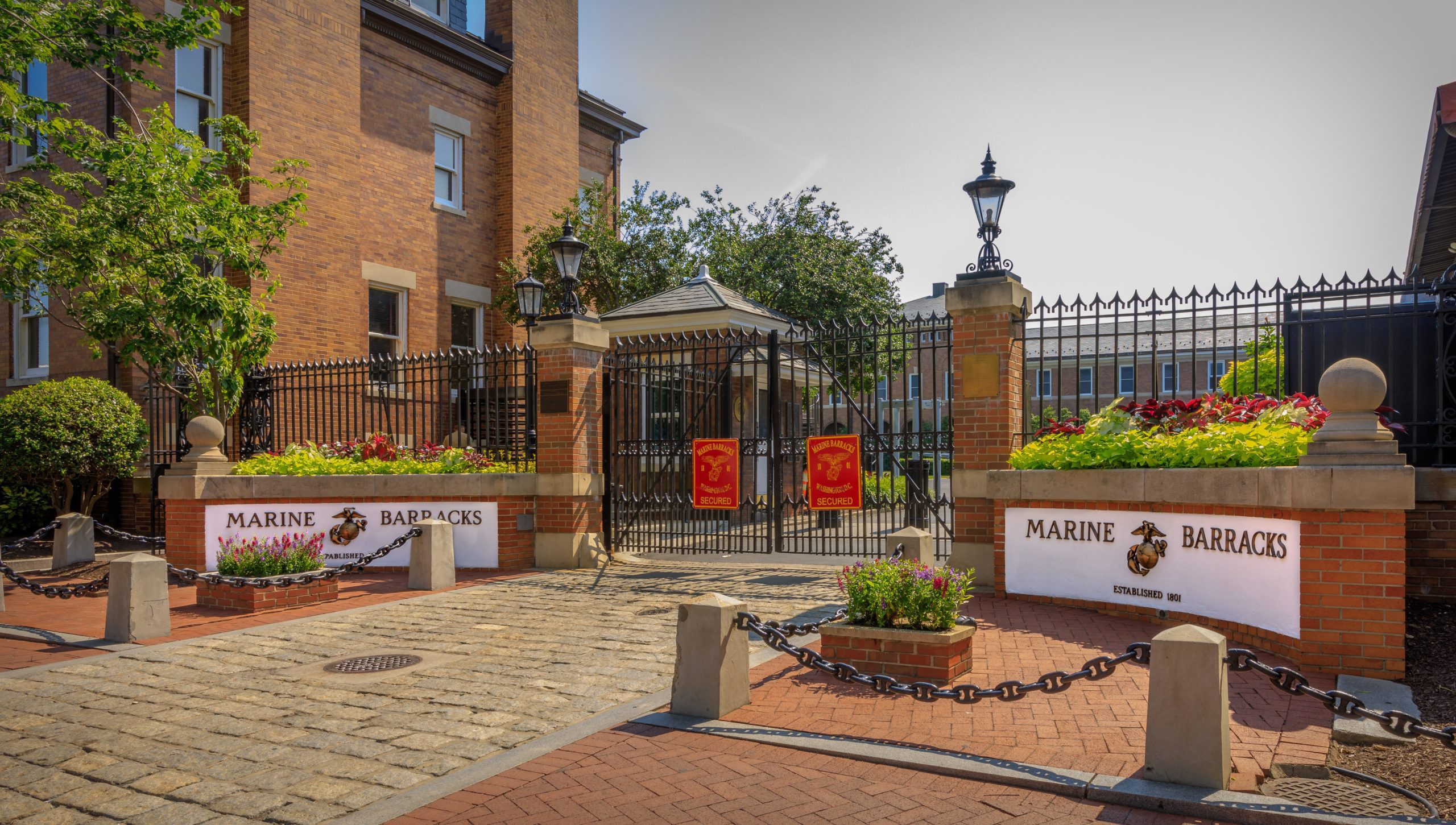
Location: Washington, DC
Project Scope: Maintenance of 1.3 acres of turf, perennial and tree care, weed control, fertilization, irrigation maintenance, pruning, watering
Maintained By: Forestville, MD Landscape Management Branch
Industry Awards Won: National Association of Landscape Professionals (NALP) 2018 Decade Award & Landscape Contractors Association (LCA) 2018 Decade Award
Site Description: Marine Barracks Washington is the oldest active post in the Marine Corps. Located at the corners of 8th & I Streets in Southeast Washington, D.C., the Barracks supports both ceremonial and security missions in the nation’s capital. The Barracks is home to many nationally recognized units and is rich with history including its connection to John Phillip Sousa, who served as the leader of the Marine Corps Band and wrote many of his well-known marches while there. It is also the site of the Home of the Commandants, which, along with the Barracks, is a registered national historic landmark. What distinguishes this site is the military precision with which it must be maintained—crisp lines, neat hedges, clean beds, and perfectly manicured turf are just a few of the details that make this very formal landscape stand out. Over the past 12 years, the contractor has worked in close coordination with Marines to maintain the site’s meticulous appearance and enhance the property’s visual appeal and functionality for its numerous residents and visitors.
Challenges & Solutions: Among the job’s unique challenges is its high visibility. Every Friday evening during the spring and summer months (April-August), the site is host to a public performance of music and precision marching that features The President’s Own United States Marine Band, the U.S. Marine Drum and Bugle Corps, Color Guard, Silent Drill Platoon, and Ceremonial Marchers. The Friday evening parade has become a universal symbol of the professionalism, discipline, and Esprit de Corps of the United States Marines. In attendance are often high-ranking military and government officials, as well as visiting veterans, foreign audiences and the general public. During parade season, this site is visited by nearly 100,000 people. Additionally, the Marine Corps Commandant’s residence is attached to the property, which means an increased security and scrutiny, as Washington’s elite are frequent visitors.
Keeping the 30,000 SF parade deck in top shape is essential. The turf receives no recovery time in season with practices and parades. To combat compaction issues and keep it looking green and lush, the turf gets aerated nine times over the course of the season (three deep tinings and five rolling tinings) and receives an extensive fertilization and chemical control program, which ranges from 5-10 chemical applications per season depending on environmental conditions. During the off-season, there is also an extensive seeding program. The landscape contractor invested in a “grow blanket” that’s placed over the turf after fall seeding to enable new growth to take root and thrive all winter. When the blanket comes off in the spring, a thick, vibrant parade deck is unveiled. The successful use of this grow blanket has prompted the contractor to perform the same operations on the Commandant’s garden.
Photos & Descriptions:
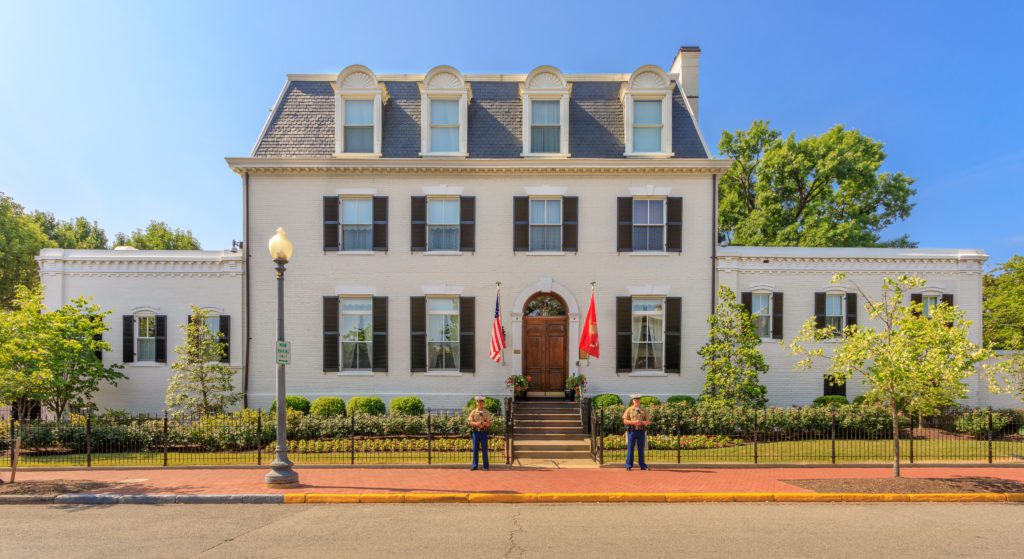
Built in 1801, Marine Barracks Washington is the oldest active post in the Marine Corps and is the oldest building in continuous use in the nation’s capital. The Home of the Commandants at the north end of the Barracks was completed that same year and is the only original building still standing. The Commandant does a lot of entertaining of Washington’s elite, necessitating attention to detail and quick turnaround on last-minute requests.
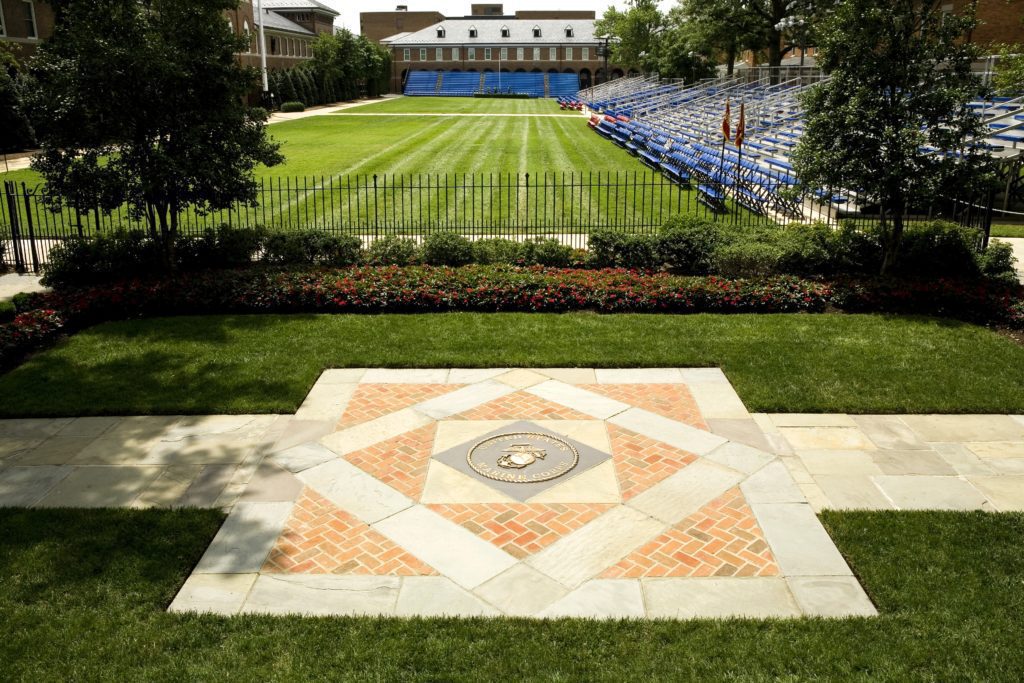
(BEFORE) In 2011, the contractor performed a complete renovation of this area, known as the Marine Corps Family Garden. Because a portion of this site is the Commandant’s residence, the site must reflect his personal style and needs as well as that of the Marine Corps. The Marine Corps emblem, which is a focal point of the Commandant’s garden, was cleaned and resealed as part of the 2011 renovation.
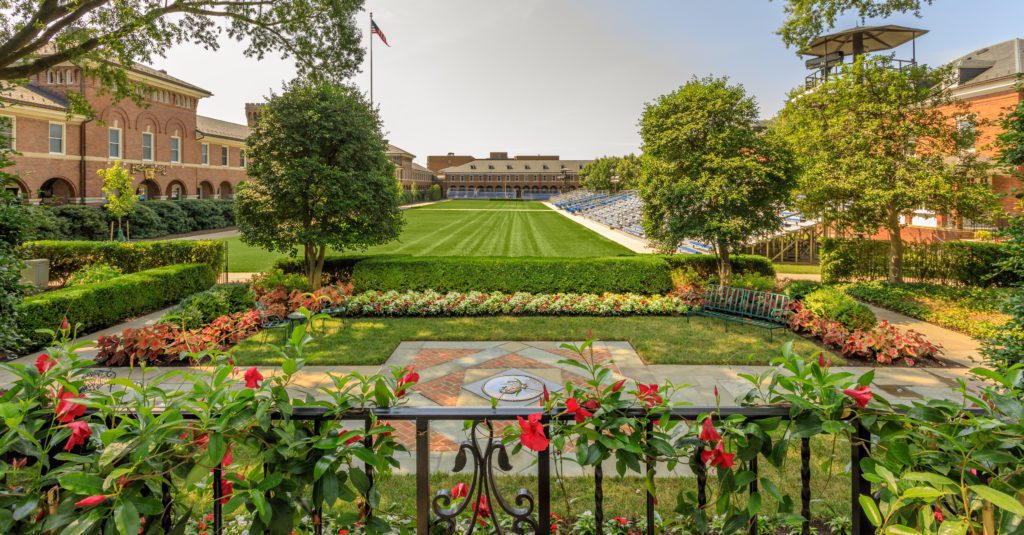
(AFTER) Through the creation and implementation of a long-term, ever-evolving plan, the contractor has maintained strict precision while adding more color and plant varieties to suit the current Commandant and his wife. When a new Commandant takes on the role (approximately every four years), he is able to change and update the landscaping plan to fit his liking. Additionally, the landscape contractor is in frequent contact with the Commandant’s wife regarding upcoming events and landscaping requests
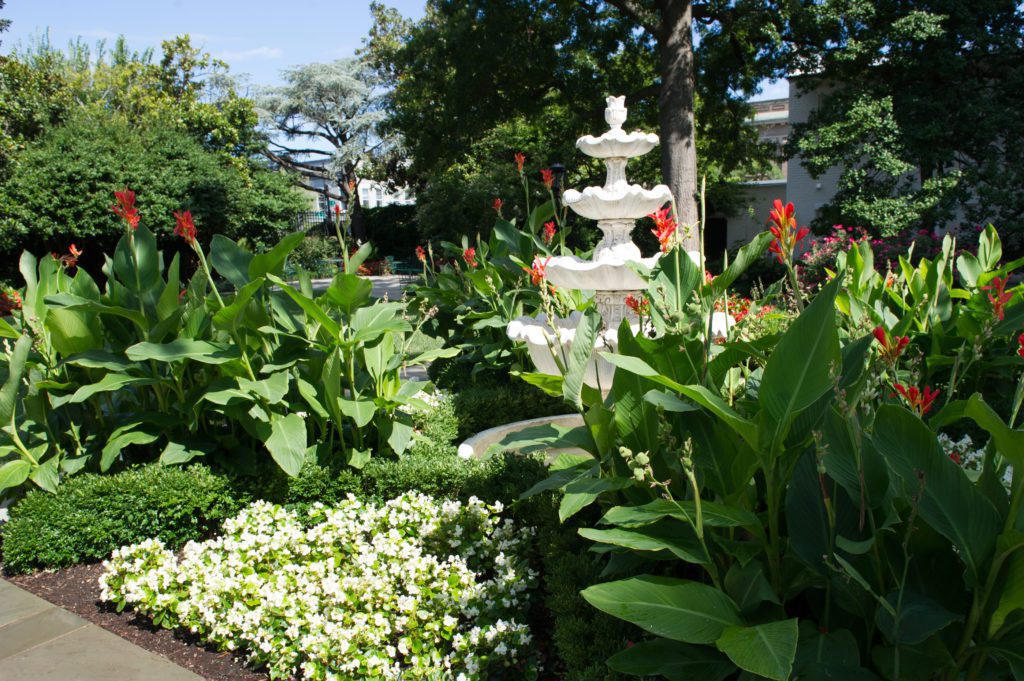
(BEFORE) The plant palette has greatly evolved over the years, from heavy use of lush tropicals…
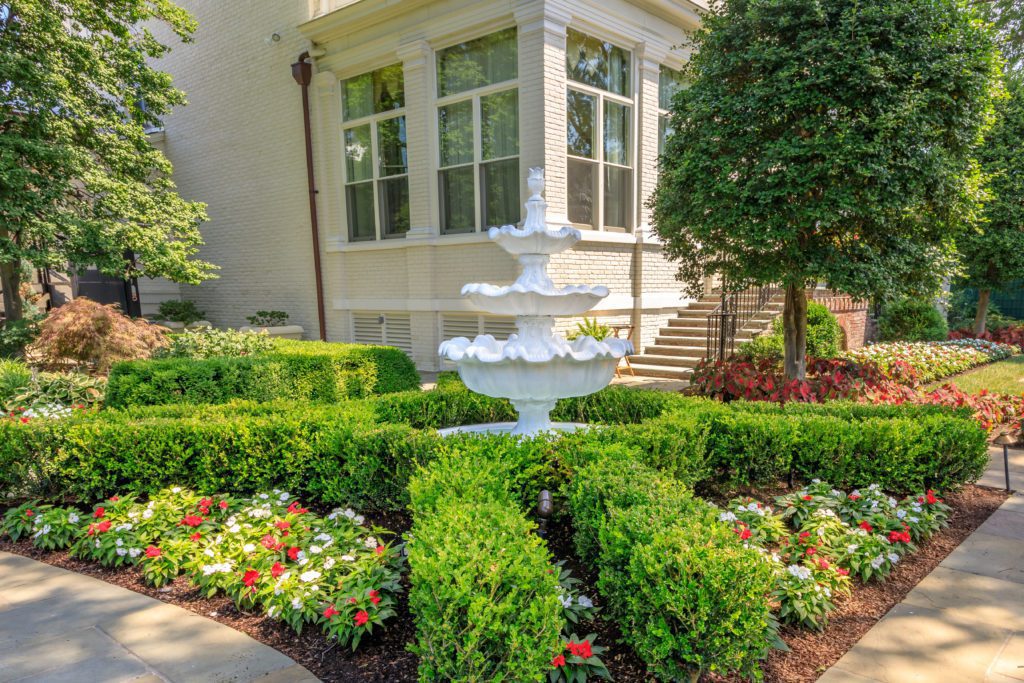
(AFTER) …to bright annuals and trim shrubs. In addition to caring for the 1.3 acres of turf on site, crews spend eighty percent of their time on detail work: hand-pruning, deadheading, weeding and clean up.
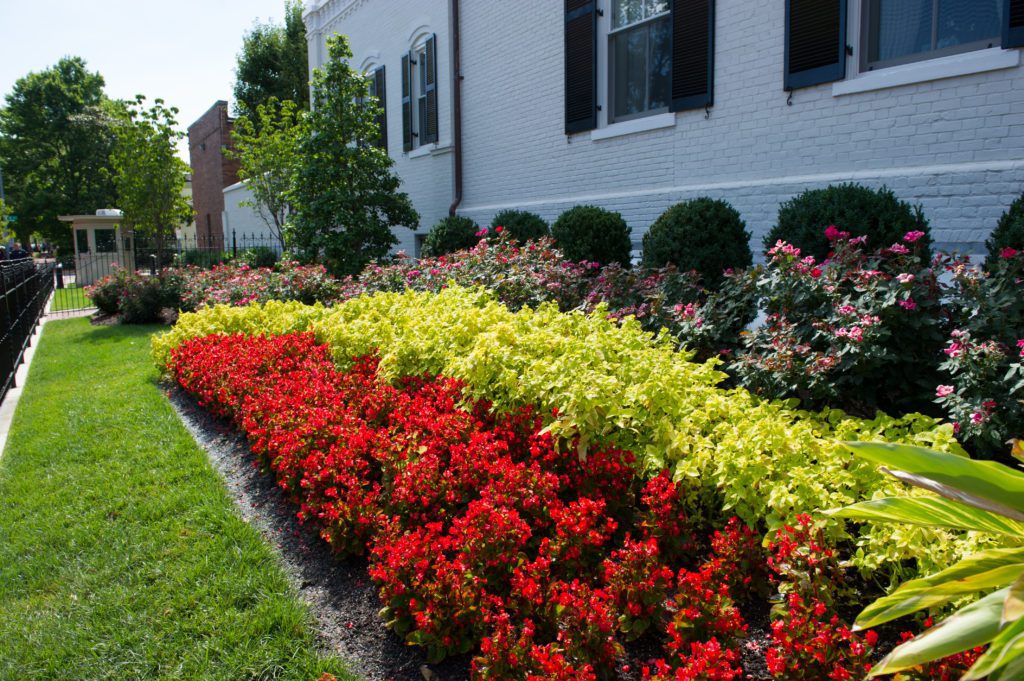
With every visit, crews inspect plant material to ensure viability in the warm, city microclimate. Plant materials are monitored for insect infestations including rose rosette, one of the most invasive plant diseases in the region. The contractor proactively cleans pruners with a bleach solution to prevent cross-contamination and is constantly monitoring for signs of disease which, if found, is removed immediately—resorting to chemical application only as necessary.
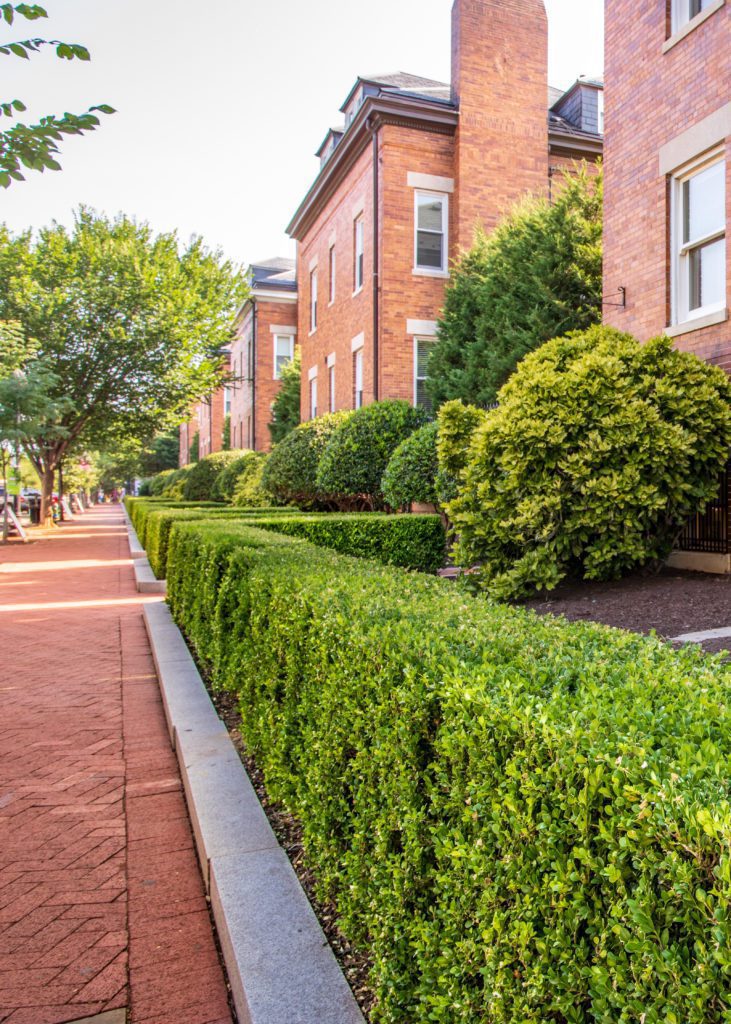
With linear precision essential throughout the property, these boxwoods must be kept at the exact same height, requiring string lines, hand pruning, and sheering to create a perfect A-frame shape. Over time, the contractor has installed additional boxwoods in between the residence quarters which, although not visible to the public, must be just as precise as the public-facing ones.
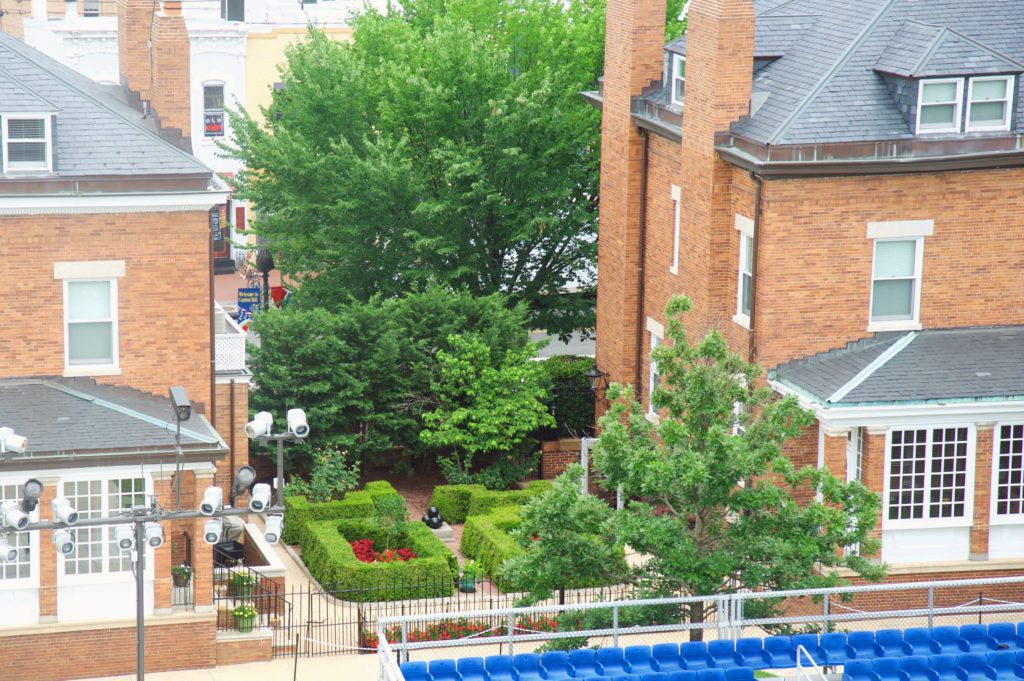
(BEFORE) In addition to the Barracks, the property includes visiting quarters and the residences of several high-ranking officers, all of which must meet the high standards and remain uniform with the entire site. At an earlier stage in this project’s evolution, trees and other plant material were allowed to grow large and lush.
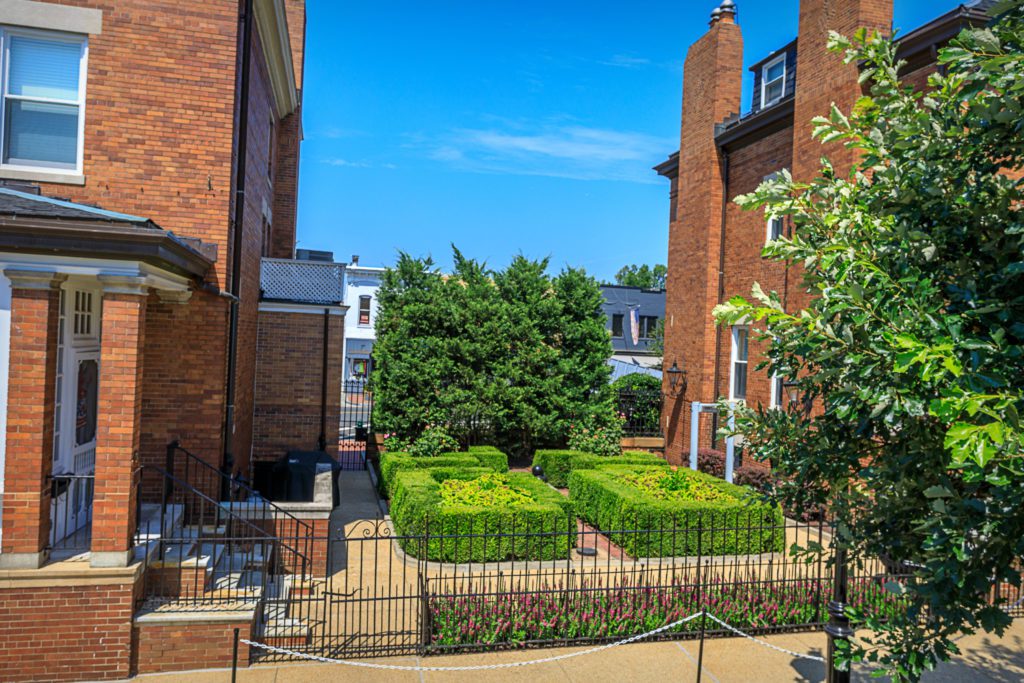
(AFTER) Now, because the residence gardens double as a public entrance to the parade deck, the contractor often thins the trees to improve sightlines, which is an important aspect of security on this site.
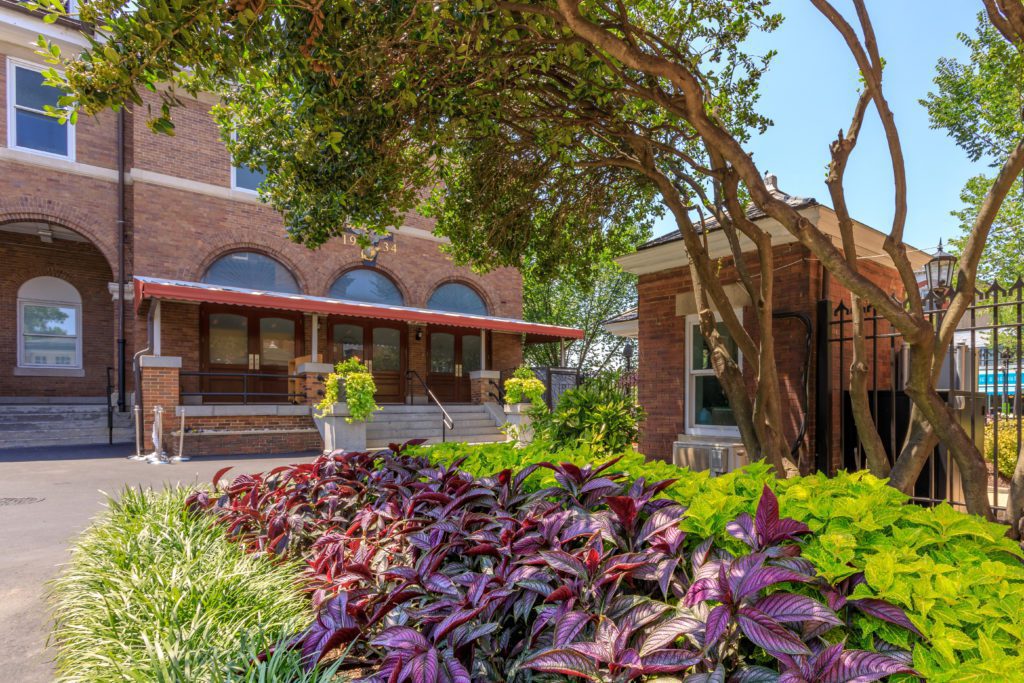
The interior of the main entrance is a high-impact area, as the first place VIP’s see when they come for parades and other events. This is also the entrance to Colonel Truman W. Crawford Hall, the new headquarters and rehearsal area for the U.S. Marine Drum and Bugle Corps. As another important security checkpoint, the contractor is asked to remove low-hanging branches and thin trees here as well to maintain a clear line of sight.
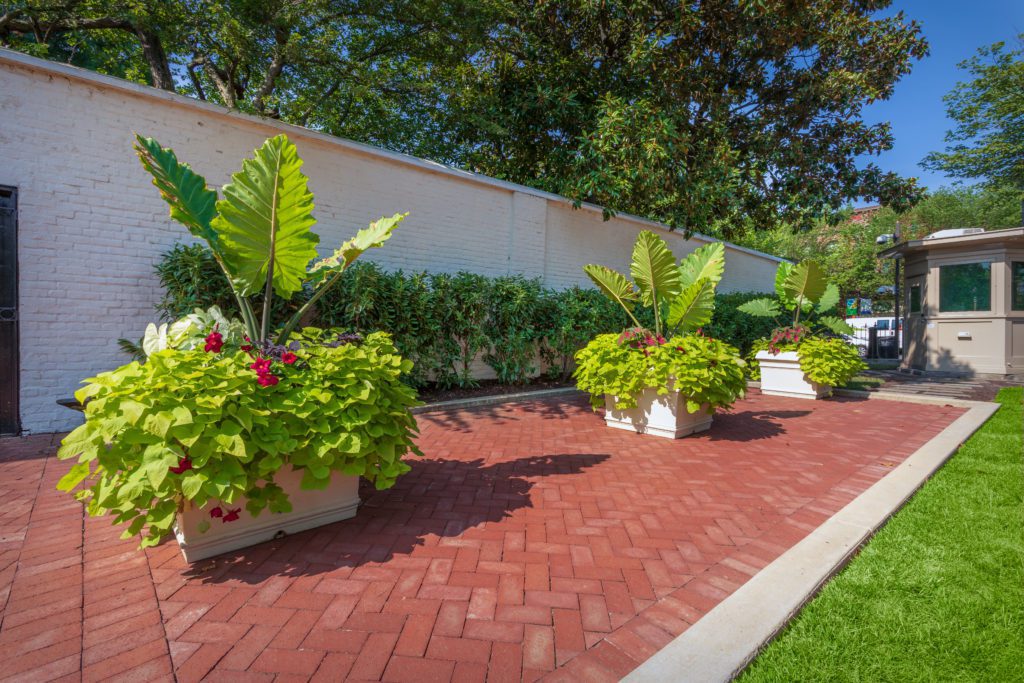
Colors and varieties of annual rotations are chosen six months to a year ahead of installation. Because parade season starts a month earlier than a typical spring installation, the landscape contractor elicited the help of its grower to custom grow annuals to ensure viability and availability for installation at the start of parade season in late April. Plant material is rotated out as soon as it starts to fade, requiring anywhere from two to five rotations a year in a given area.
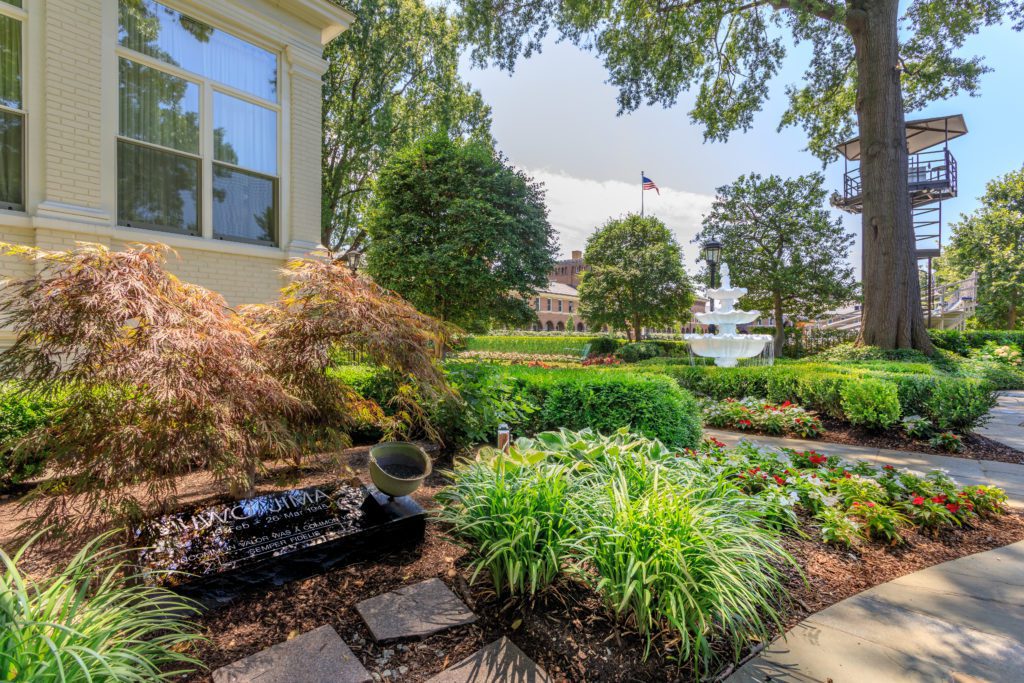
One of the recent enhancements that helps underscore the historic significance of this site is this Iwo Jima memorial that the contractor installed in the Commandant’s garden, which includes actual sand from the battleground.
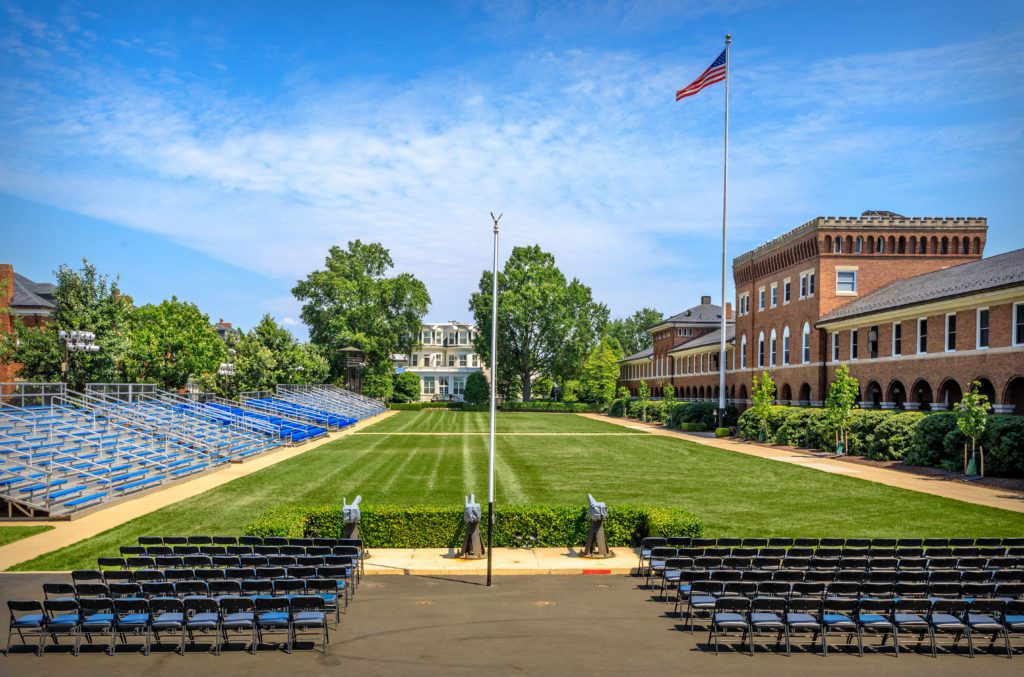
In 2011, White Oaks suffering from bacterial leaf scorch were removed and replaced with the Swamp Oaks seen here on the left side of the field. These 8” caliper, 25’ tall trees, with rootballs in excess of 7000 lbs, were installed using a 40,000 lb. forklift, so that a crane wouldn’t have to be brought in and disturb Barracks activities or the inconvenience the surrounding community. Earlier this year, when the large oaks on the right side of the field also began to succumb to disease, the contractor removed and replaced them with new oak trees.
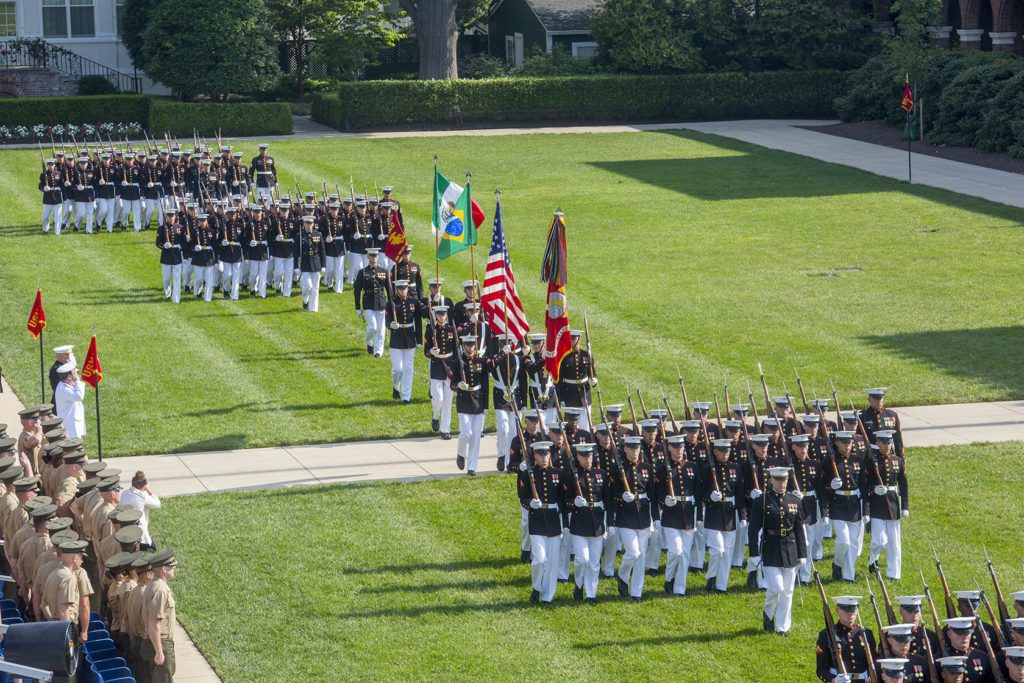
A comprehensive, long-term turf program has helped combat extensive wear and tear on the 30,000 SF parade deck. With the improvements to this area, sod replacement costs have decreased significantly for the Barracks. (Official Marine Corps photo by Sgt. Robert Knapp. The appearance of U.S. Department of Defense (DoD) visual information does not imply or constitute DoD endorsement.)
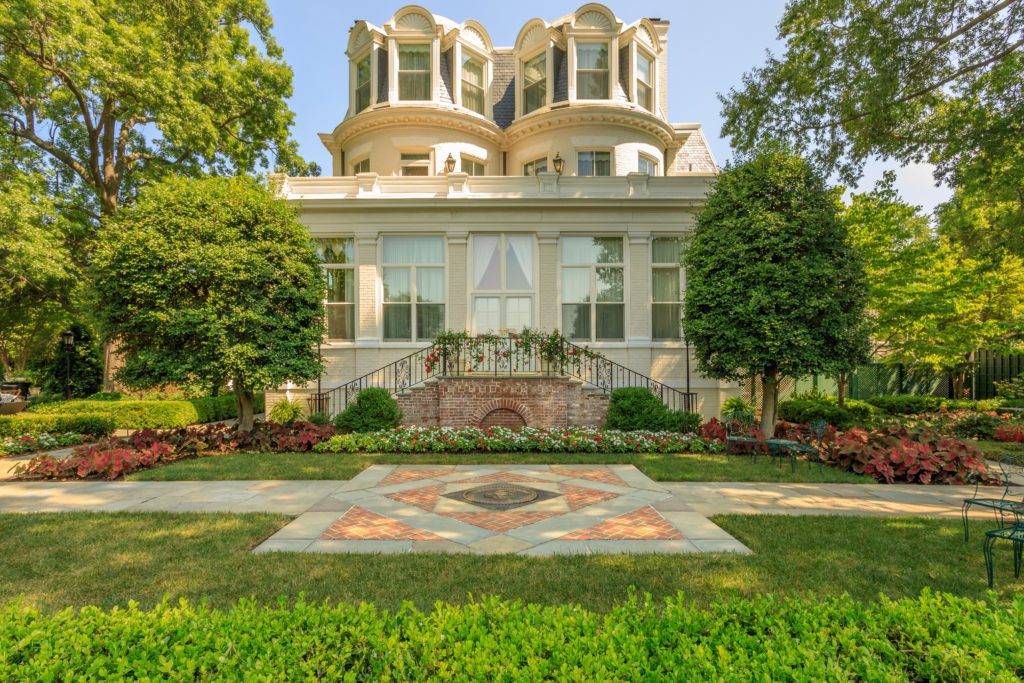
This site incorporates many landscape features—blending formal expanses of turf, sitting areas, gardens and walkways with complimentary punctuations of vivid annuals, bountiful perennials and formal hedges—all of which work in concert to create a formal yet inviting site that’s ideal to showcase the Marine Corp’s military precision.